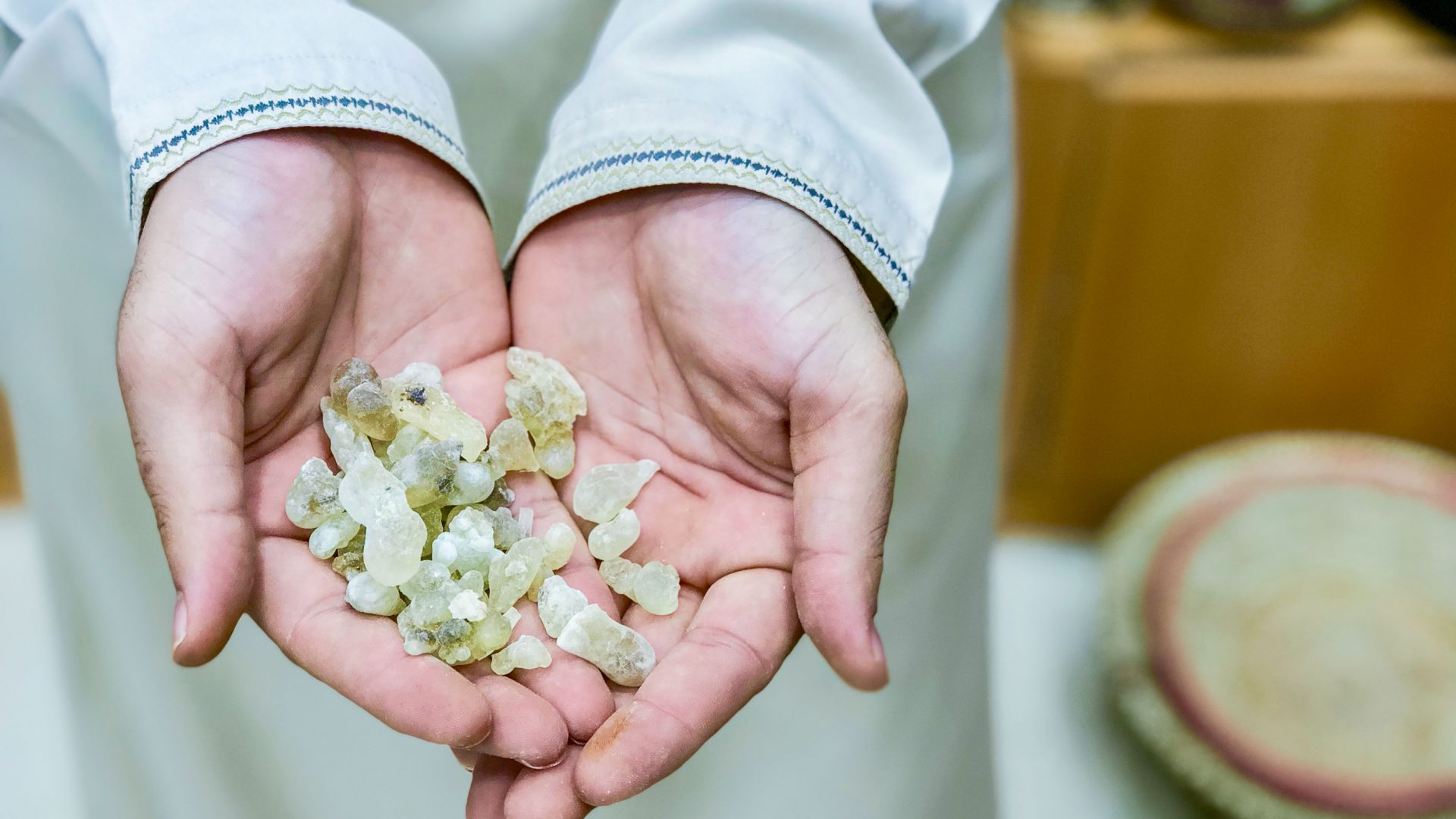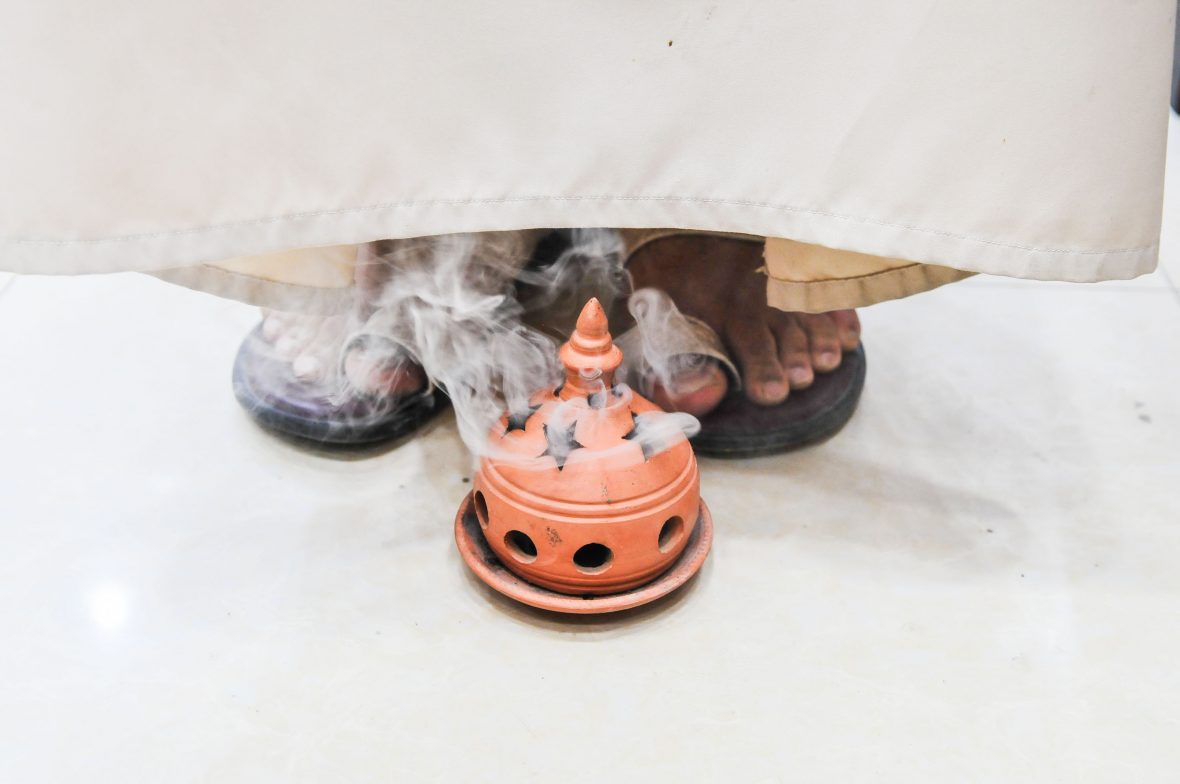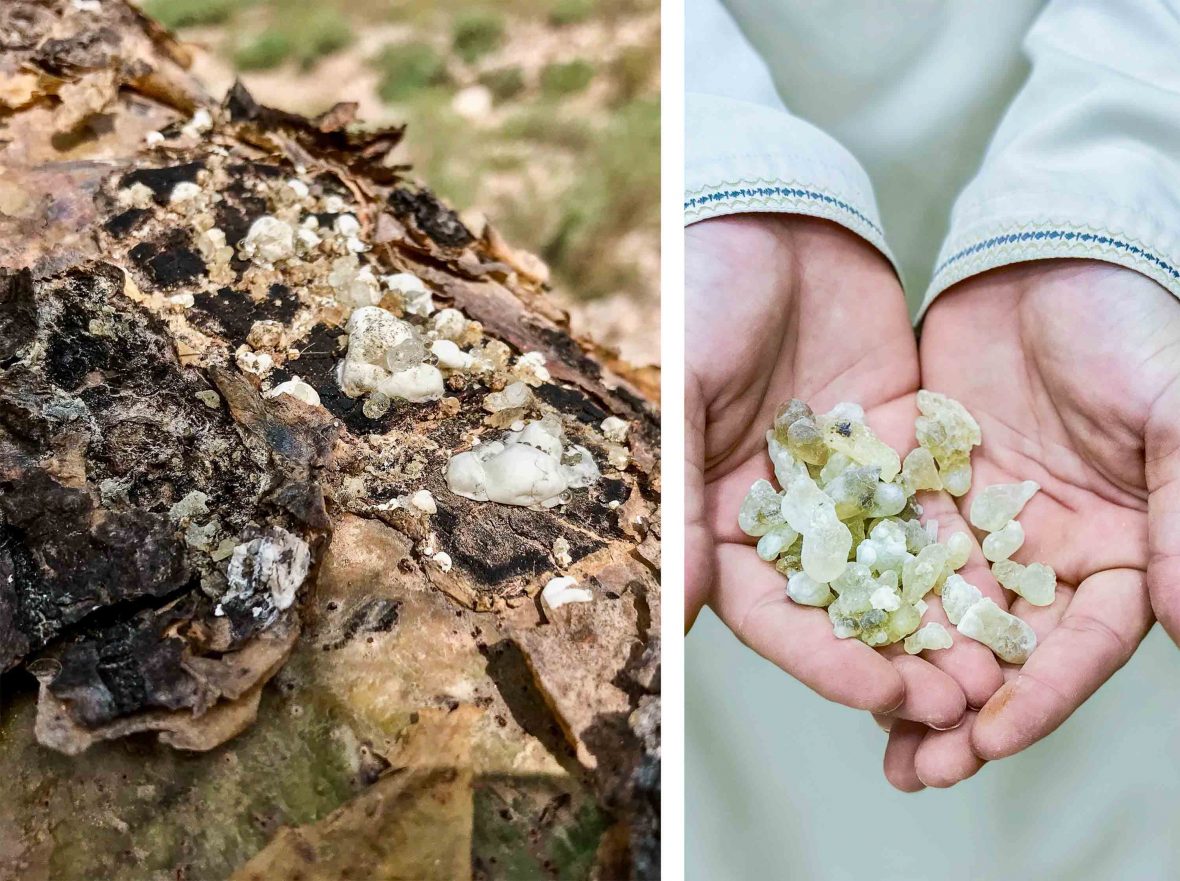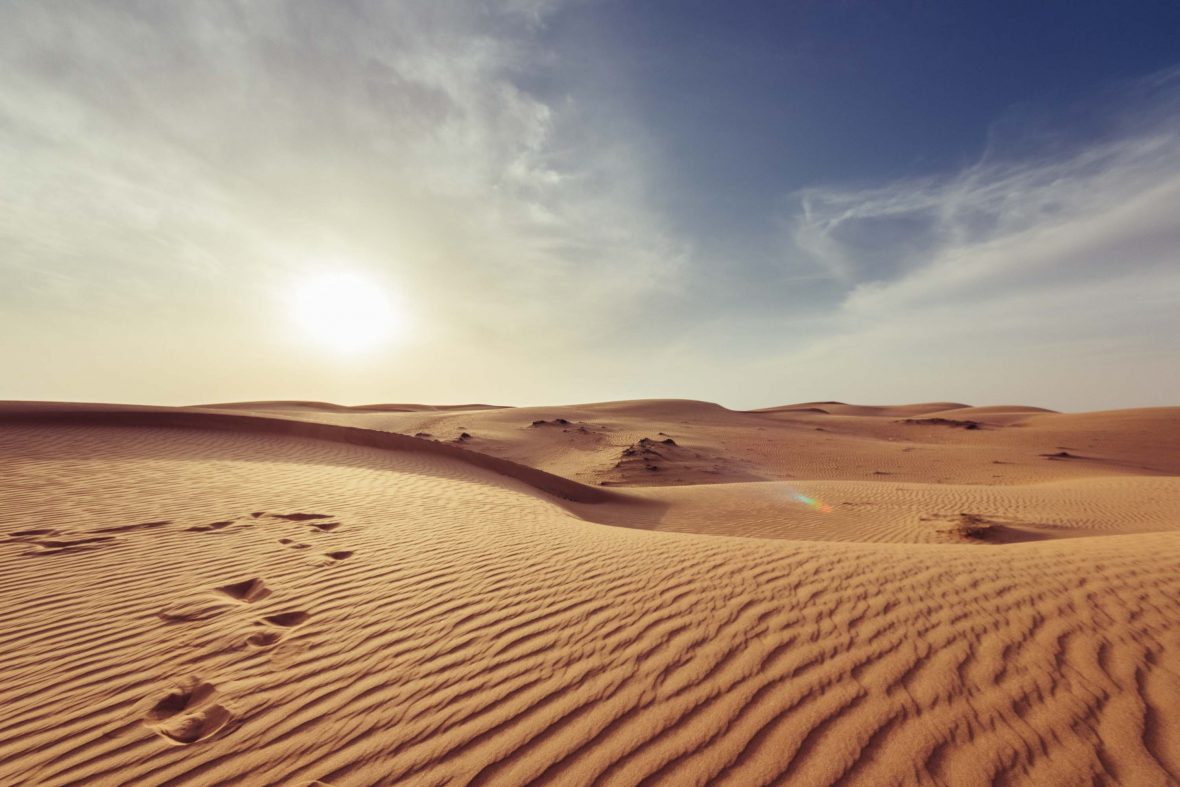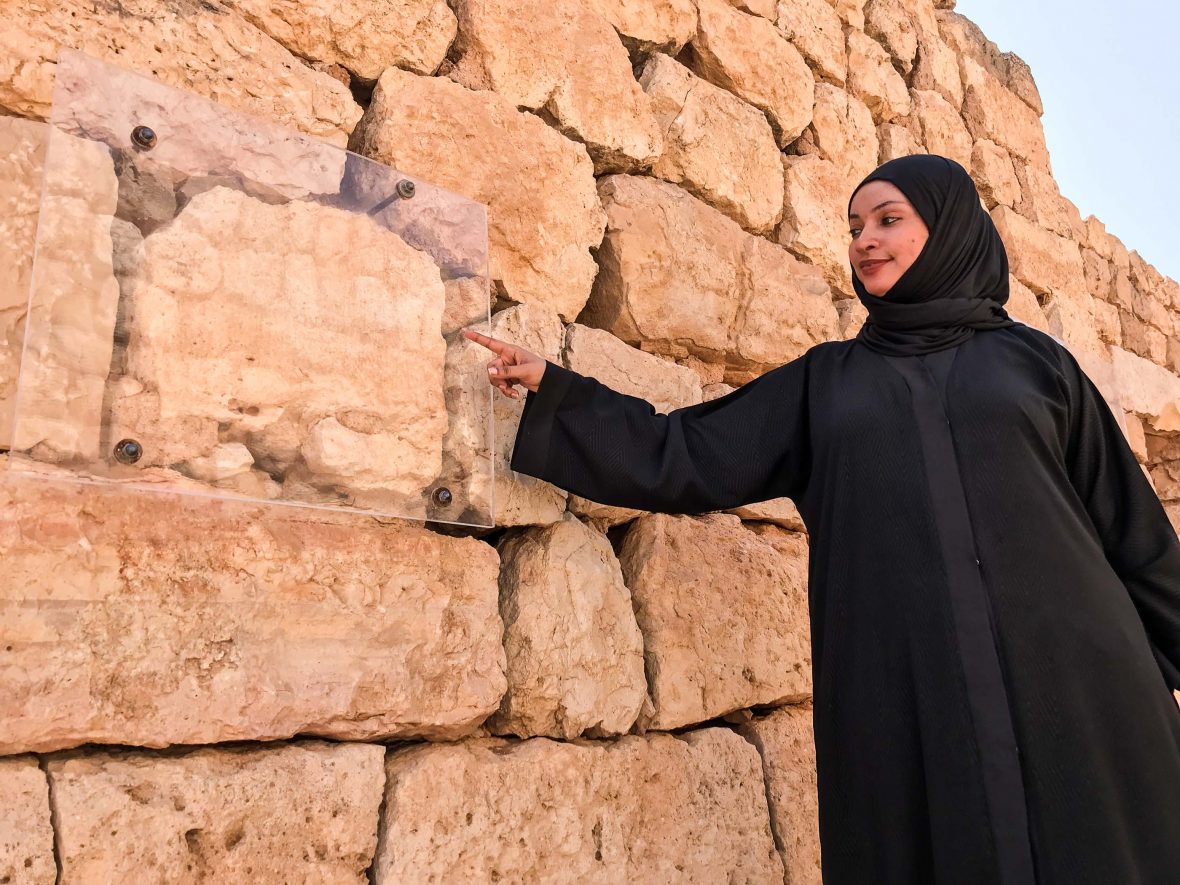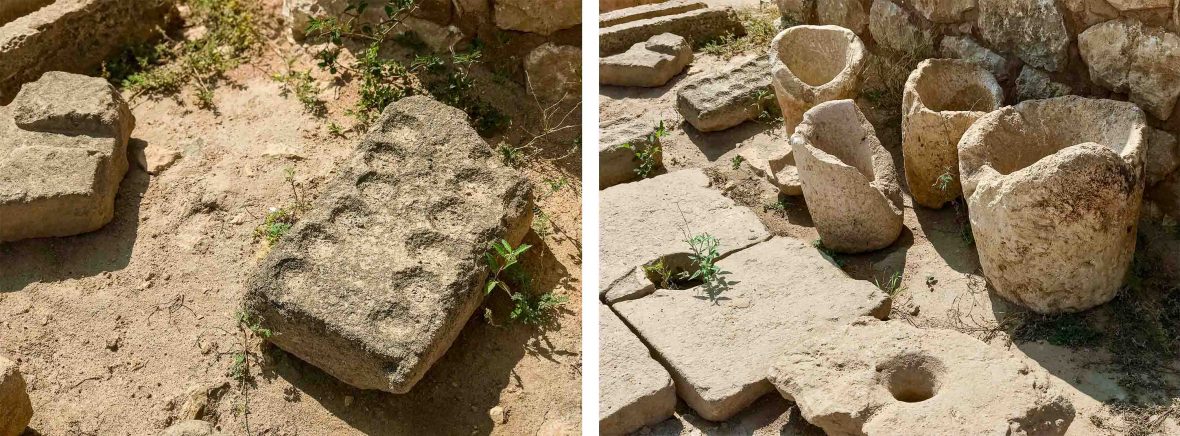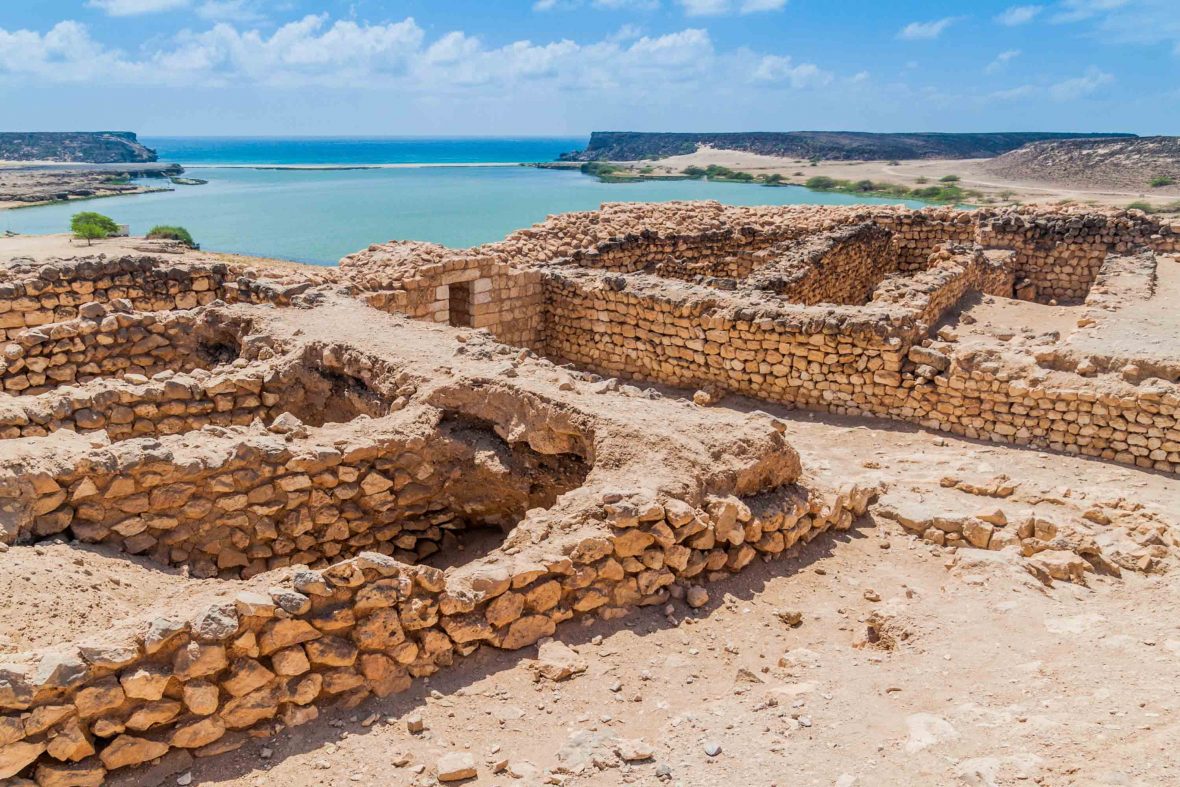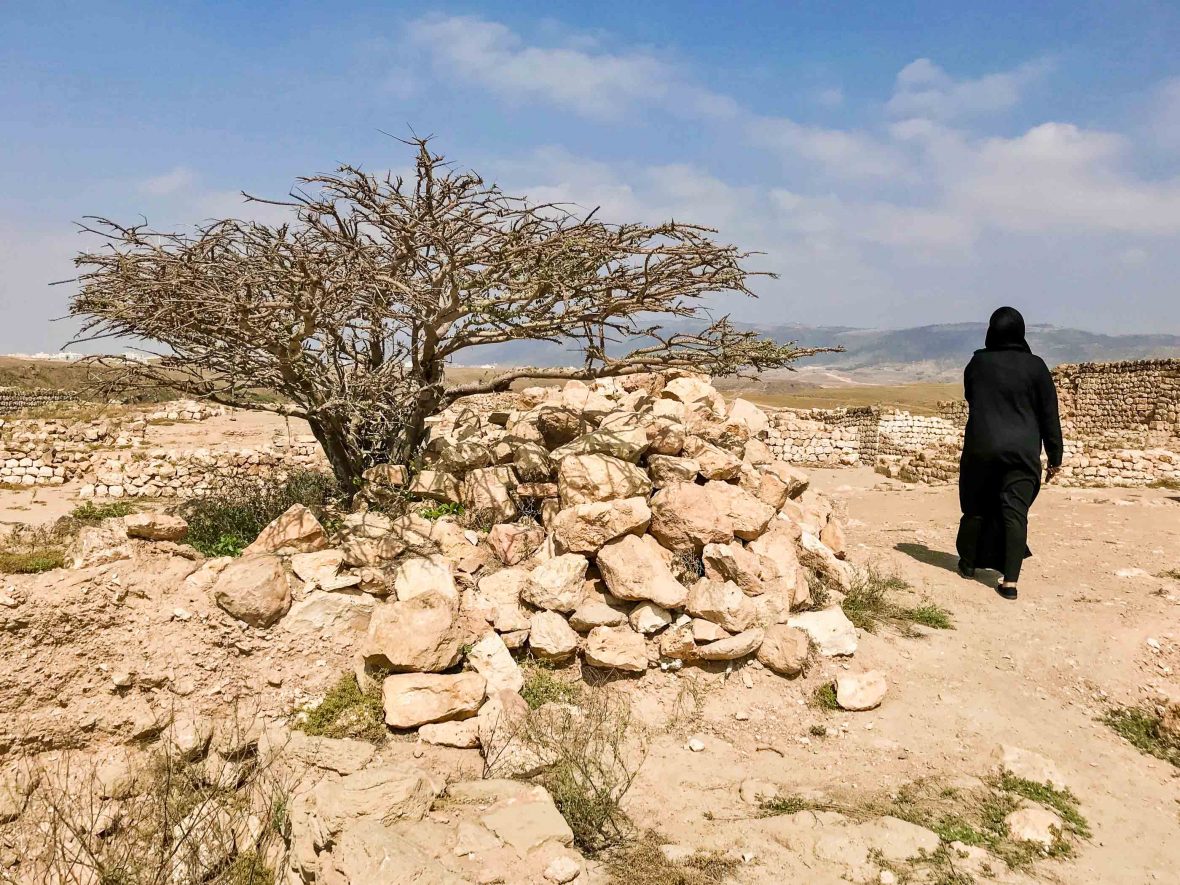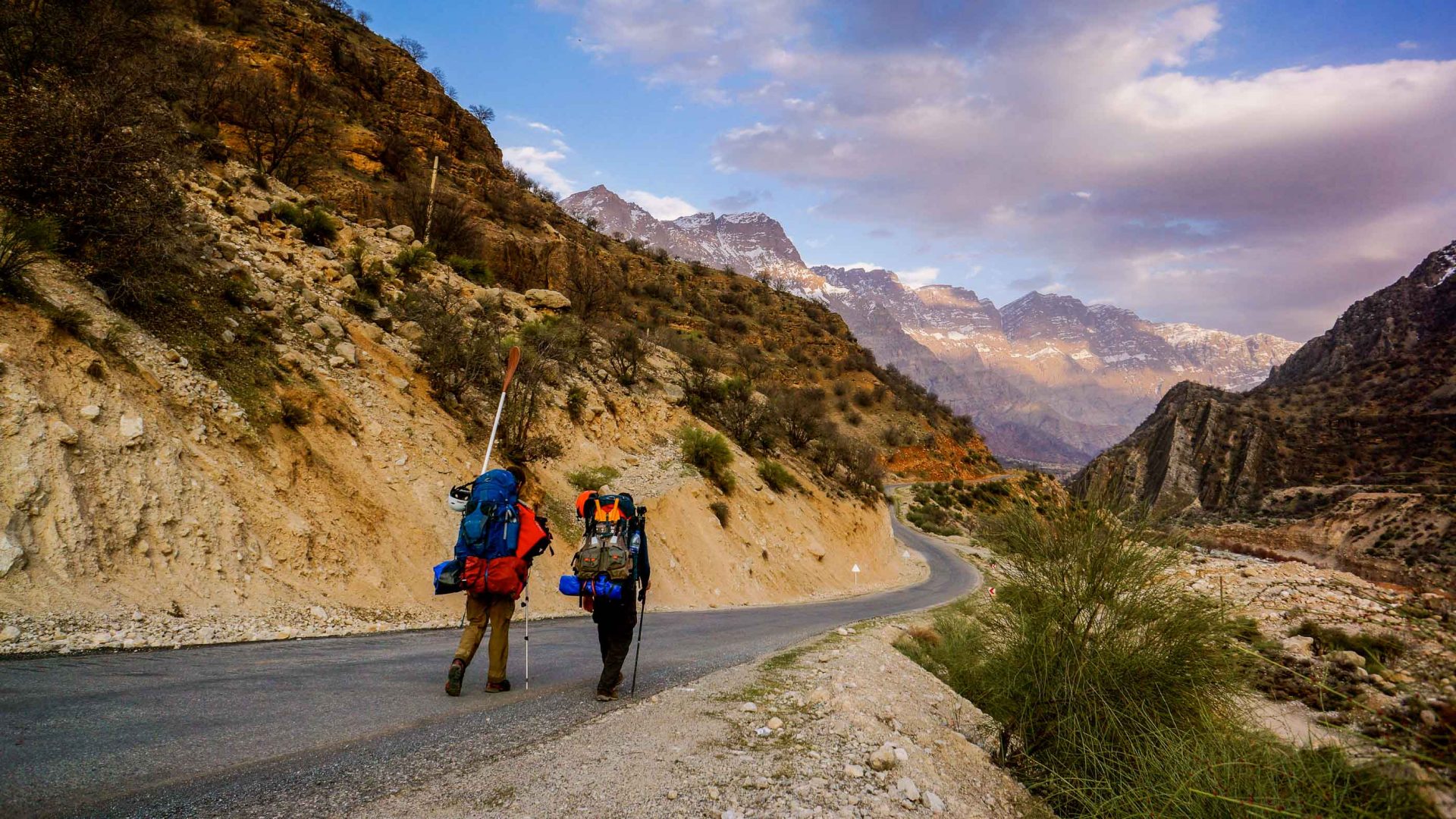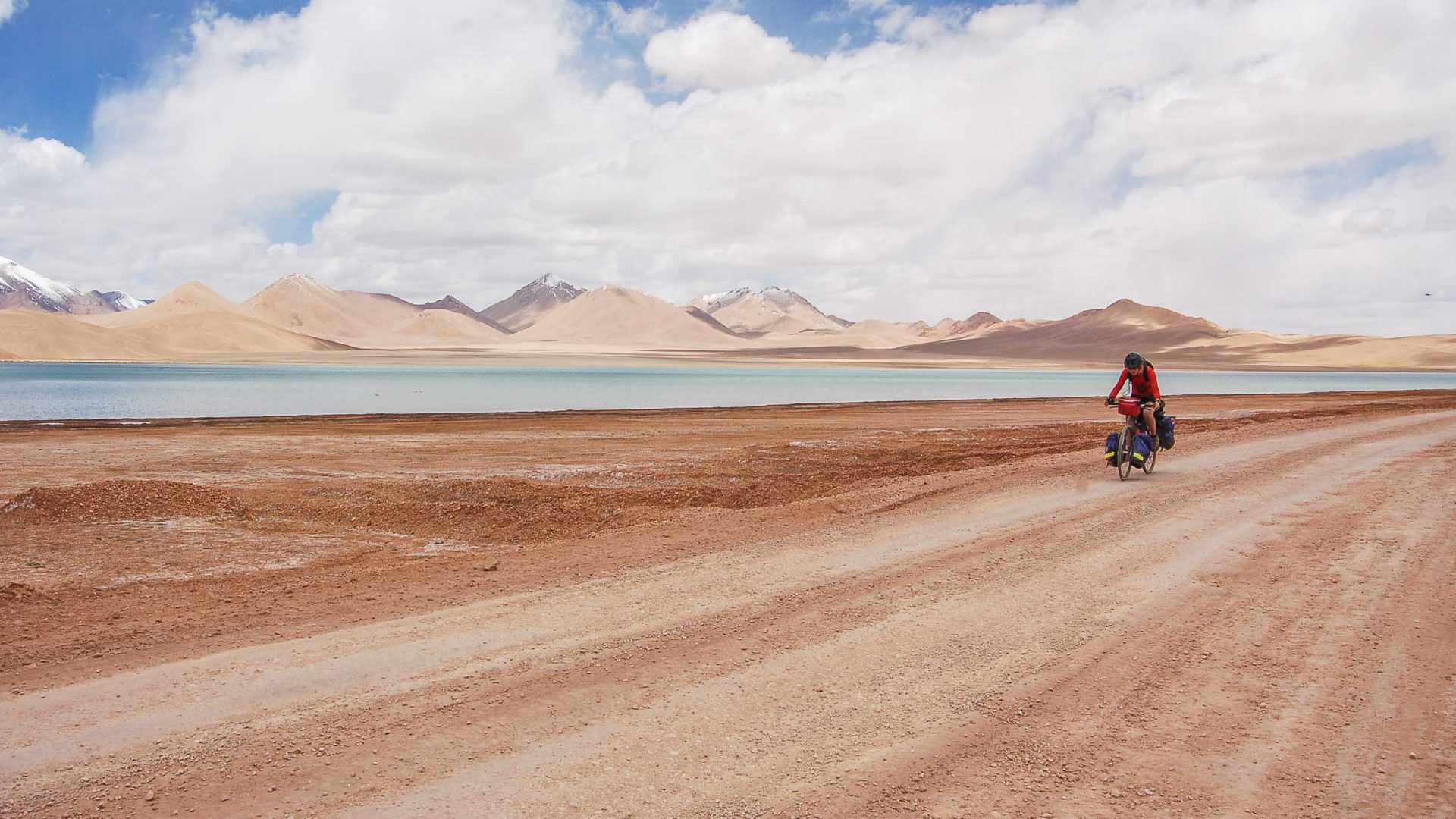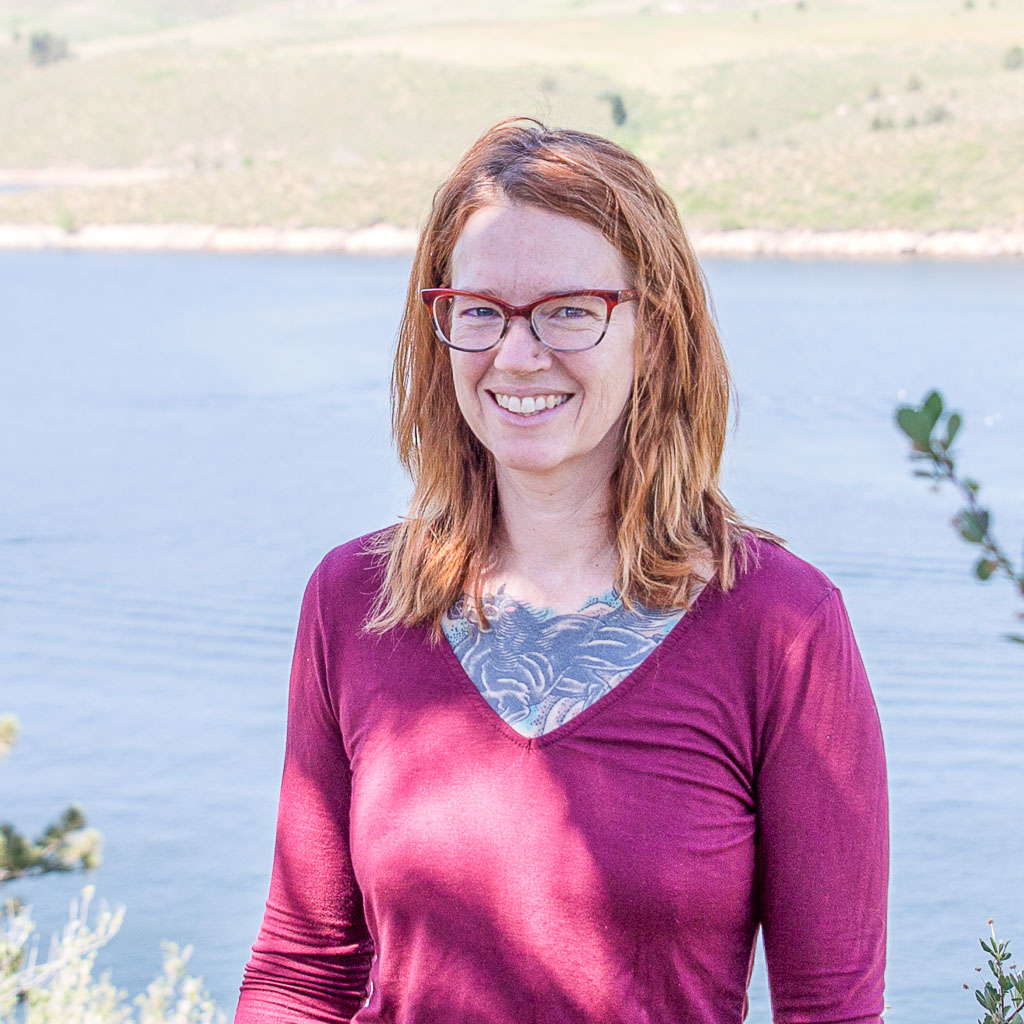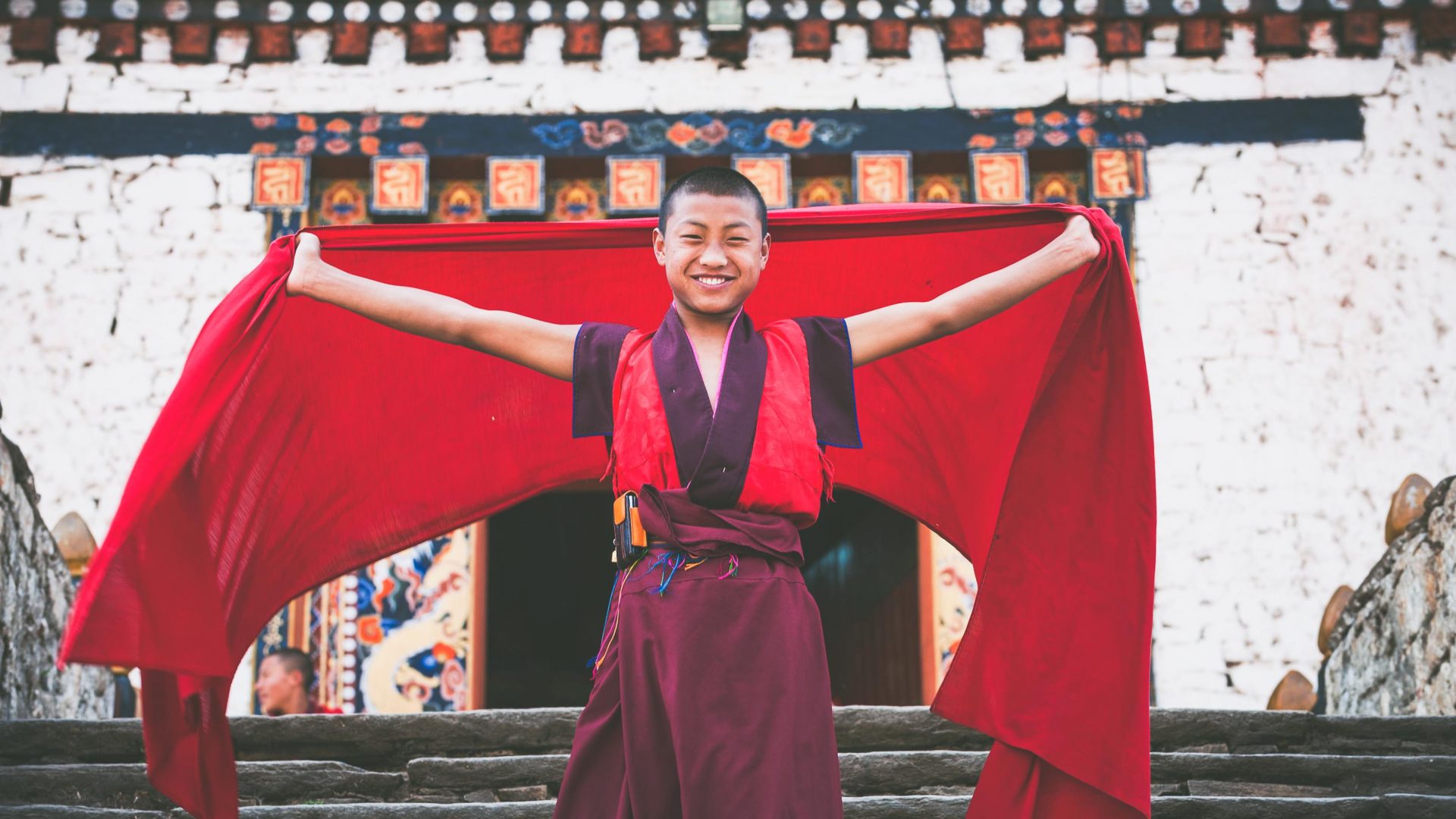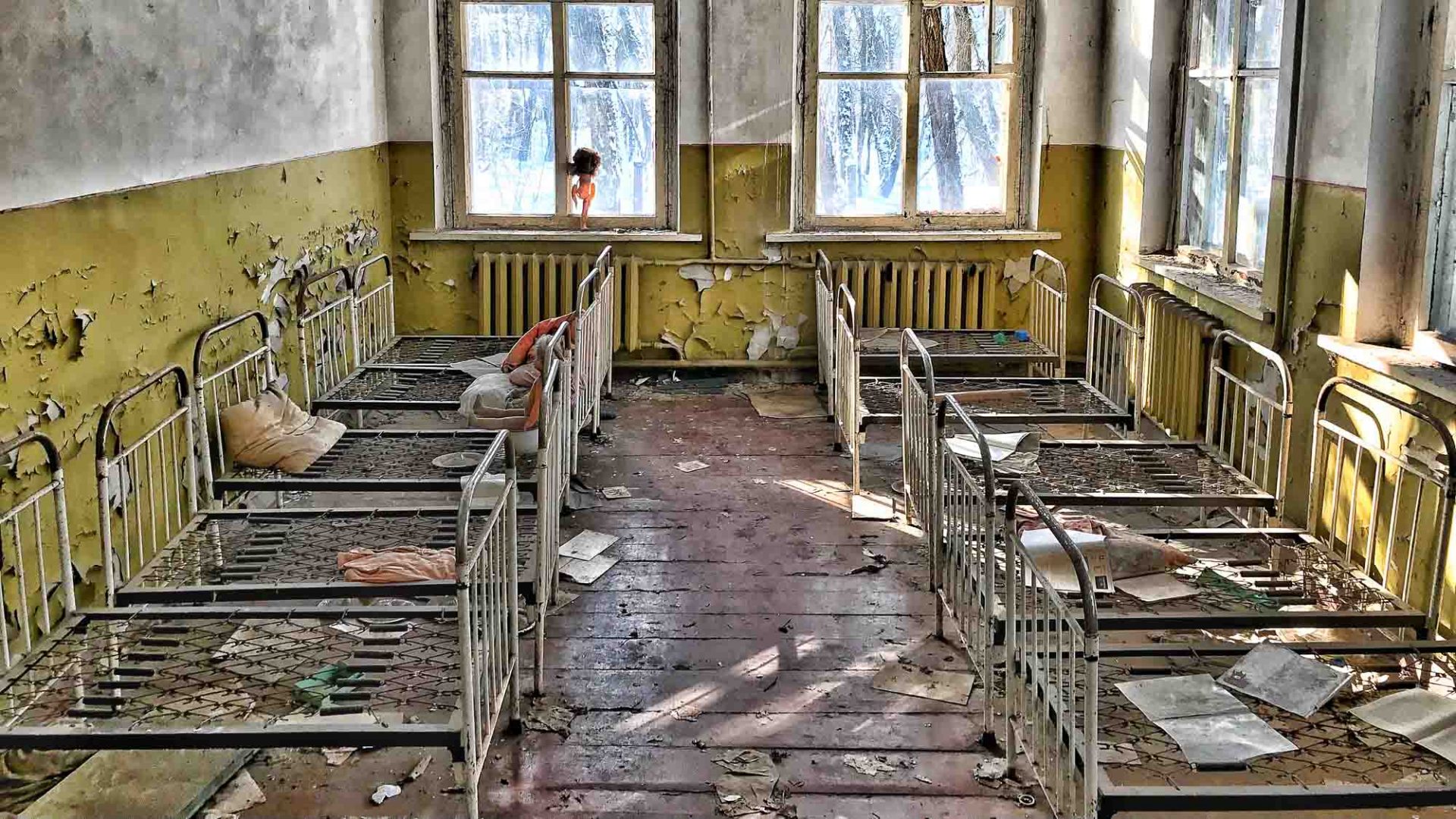
Mystical, pure and precious, frankincense is more than just an aroma. Emma Thomson follows the Incense Route in Oman to explore its 6,000-year-old story, and how its discovery changed this part of the world.
The smoke coils around the man’s sandaled feet like a cobra, slowly snaking inside his long white dishdasha (robe), until the air, and my head, are hazy from the rich perfume.
He places another tarnished green nugget on the smouldering charcoal. It fizzes a little. Travelers wander through the souk and stop to sniff the air. In a world clouded by celebrity-endorsed scents, this aroma is ancient, pure and mystical. It is frankincense.
Known as ‘white gold’, it’s been traded for over 6,000 years. Egyptians packed the body cavities with it during the mummification process; Wise Man Melchior famously brought it as a gift for baby Jesus; Queen Sheba ferried it to Jerusalem when meeting King Solomon; and Roman emperor, Nero, burned an entire year’s harvest of frankincense at the funeral of his favorite mistress.
Churches and mosques also hungered for the humble resin they called Arabia Felix (‘Arabia the Blessed’), which is harvested by cutting the bark of the Boswellia sacra tree and leaving the sun-dried sap to congeal on the surface.
RELATED: Iran: One of 2018’s most underrated destinations
The stunted gnarled trees—which only produce resin when they’re 10 years old—grow in Yemen, Somalia and Ethiopia, but the best frankincense originates in Oman, where the limestone soil and arid climate produce the highest-quality fragrance.
In fact, the country’s southern Dhofar region, which surrounds modern-day Salalah, sat at the center of an ancient Incense Route that originated separately from the Silk Road between 700BC and 200AD.
As we approach the UNESCO-listed ruins, the fierce sun singes our noses. Flat dry plains lie all around, but in its heyday, this area was green with grain, sorghum and coconuts, while leopards and black panthers roamed the nearby mountains.
We pass through the former monumental entrance gate. Goatskin has been wedged between the limestone slabs to demarcate the original and new stones. “Look here,” points my guide, Raya, clad in a black hijab and abaya. At first, the sun obscures what’s behind the Perspex sheet, but as my eyes adjust, I can make out scratches in the rock—2,300-year-old Arabian inscriptions.
I turn back to survey the site and try to imagine the fort whose wealth was so admired that even Alexander the Great spoke of conquering the ‘port of perfumes’.
And a Greek seafarer described seeing Sumhuram for the first time like this: “Incense can stand by the quay without being guarded, thanks to the power of a god that protects it. Not even a grain of the precious resin can be loaded unlawfully. If a grain of incense is loaded, the ship cannot sail for it is against the will of the god.”
The god he speaks of are jinns—supernatural pre-Islamic spirits. Belief in them runs strong even today. “Only Omanis are allowed to collect frankincense so as not to anger the jinns,” says Raya. “Baleed has the best position in Salalah, but no-one builds their house there because they believe it’s inhabited by the genies.”
“We still open the windows and burn frankincense before it gets dark,” she adds, “to keep out jinns and sickness. And in a way, we do that because we now know frankincense kills viruses.”
Indeed, the forts may have crumbled but frankincense is as much in demand as ever. From the expensive medicinal Al-Hojari variety, used to treat high blood pressure, nausea, indigestion, improve memory and as toothpaste, to Annajdi and Asha’bi, which is burned to scent clothes and keep mosquitoes away. “We’re trying to keep frankincense alive among the youth,” laughs Raya. “I sneak it into their drinks!”
RELATED: Meet the men who spent 46 days in the wilderness (on purpose)
Driving back towards Salalah, we pull off the road into a gulley and I follow Raya on foot towards a frankincense tree. The bark has already been cut and sap is crystalizing on the surface like raw sugar. These trees are under threat. Ecologists are concerned that production of the fragrant resin will decline by half over the next 15 years, or the land lost to agriculture, because the old trees aren’t being replaced.
